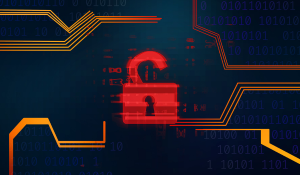Silent hacker attacks and the need for detection mechanisms
Again and again, we read about hacking incidents where attackers can spy on a company, an authority or a ministry and remain unnoticed for months...

In our last blog post "Silent hacker attacks and the need for detection mechanisms" we talked about covert cyber attacks and the need for detection tools. Now we would like to present a typical Endpoint detection and response solution with its building blocks.
| TABLE OF CONTENT |
EDR, an acronym for Endpoint Detection and Response, represents a crucial evolution in cybersecurity, moving beyond traditional, reactive defense mechanisms. At its core, EDR is a sophisticated endpoint security solution designed to continuously monitor and analyze data from end-user devices – such as laptops, desktops, servers, and mobile devices – which serve as critical entry points for cyber threats. Unlike conventional antivirus software that primarily relies on known signature-based detection, EDR systems employ advanced analytics and behavioral monitoring to identify, investigate, and respond to suspicious activities in real-time.
The term "Endpoint Detection and Response" was originally coined by Gartner analyst Anton Chuvakin. He defined EDR as a "solution that records and stores endpoint-system-level behaviors, uses various data analytics techniques to detect suspicious system behavior, provides contextual information, blocks malicious activity, and provides remediation suggestions to restore affected systems."
This encompasses a broad spectrum of capabilities, including comprehensive data collection from endpoints, the application of machine learning and artificial intelligence to detect anomalies and attack patterns, providing deep visibility into security incidents, and enabling rapid, automated, or guided responses to neutralize threats. For IT specialists in healthcare, manufacturing, and critical infrastructure – sectors increasingly targeted by sophisticated cyberattacks – understanding and implementing a robust EDR solution is no longer optional but a fundamental requirement for maintaining operational resilience and data integrity.
The criticality of robust endpoint security has never been higher, and in today's dynamic threat landscape, EDR stands out as an indispensable cornerstone for enterprises and public authorities alike. With the pervasive shift towards remote and hybrid work models, traditional perimeter defenses are no longer sufficient, as every endpoint outside the corporate network becomes a potential gateway for adversaries. EDR solutions provide the necessary visibility and control to protect these distributed devices, ensuring business continuity and data integrity
Here's why EDR is paramount for all organizations:
Adapting to the Distributed Workforce: The increase in remote work means endpoints are often outside the traditional network perimeter, accessing corporate resources from diverse and potentially less secure environments. EDR provides continuous monitoring and protection for these devices, regardless of their location, mitigating risks associated with unsecured home networks or public Wi-Fi. It helps protect against threats that might bypass conventional firewalls or VPNs, such as malware introduced via personal devices or unpatched software.
Proactive Threat Detection Beyond Signatures: Cybercriminals are constantly evolving their tactics, using polymorphic malware, fileless attacks, and sophisticated social engineering techniques that often evade traditional signature-based antivirus solutions. EDR utilizes advanced behavioral analytics, machine learning, and artificial intelligence to detect anomalous activities and Indicators of Compromise (IoCs) or attack (IoAs) that signify even novel or unknown threats, providing a crucial layer of defense against advanced persistent threats (APTs) and zero-day exploits.
Enhanced Visibility and Contextual Insight: EDR systems collect and correlate vast amounts of endpoint data – including process activity, network connections, file changes, and user behaviors. This rich telemetry provides IT security teams with unparalleled visibility into what is happening on each endpoint, offering critical context around security incidents. This detailed insight allows for a deeper understanding of attack chains, helping to identify the root cause of breaches and pinpoint the most vulnerable areas within the network.
Accelerated Incident Response and Investigation: When a security incident occurs, time is of the essence. EDR solutions significantly reduce the "dwell time" of threats by enabling faster investigations. They provide forensic data and visualization tools that allow security analysts to quickly trace the origin and spread of an attack, understand its impact, and efficiently triage alerts. This rapid analysis capability means threats can be contained and remediated much quicker, minimizing potential damage and operational disruption.
Automated Remediation and Response Capabilities: Many EDR platforms include automated response features that can instantly neutralize detected threats. This might involve isolating a compromised device from the network, terminating malicious processes, quarantining suspicious files, or rolling back malicious changes. This automation significantly reduces the manual workload on IT security teams, allowing them to focus on more complex strategic initiatives rather than constantly reacting to every alert. It ensures that even when human intervention isn't immediately possible, the threat is swiftly contained.
Improved Vulnerability Management and Security Posture: By continuously monitoring endpoint activities and configurations, EDR can help identify misconfigurations, unpatched software, and other vulnerabilities that might be exploited by attackers. This proactive insight aids in strengthening the overall security posture and helps organizations prioritize patching and hardening efforts, thereby reducing their attack surface.
Implementing an EDR-based solution within a company's IT security infrastructure delivers a multitude of strategic advantages that elevate an organization's defense posture from reactive to truly proactive. Beyond simply identifying known threats, EDR provides deep, real-time insights into endpoint activities, enabling security teams to detect and respond to even the most sophisticated and evasive cyberattacks.
Here are the key benefits of integrating an EDR solution into your IT security infrastructure:
Unparalleled Visibility into Endpoint Activities: An EDR platform offers granular visibility into every action occurring on your endpoints, extending far beyond simple malware detection. It continuously monitors processes, network connections, file system changes, user behaviors, and system calls. This comprehensive data collection allows security teams to detect not just the presence of malicious files, but also subtle anomalies and suspicious sequences of events that might indicate an ongoing attack, even if no explicit malware is involved. This includes understanding lateral movement, privilege escalation attempts, and data exfiltration.
Advanced Detection and Response to Evolving Threats: Unlike traditional anti-malware solutions that primarily rely on signature databases to identify known threats, EDR leverages behavioral analytics, machine learning, and threat intelligence to identify novel and sophisticated attack techniques. This is particularly crucial for detecting advanced persistent threats (APTs), zero-day exploits, and especially fileless malware. Fileless malware operates entirely in memory, abusing legitimate system tools (like PowerShell or WMI) without dropping any executable files to disk, making it virtually invisible to conventional signature-based defenses. EDR's ability to analyze behavior patterns and identify suspicious execution chains is critical in catching these stealthy attacks.
Proactive Threat Hunting Capabilities: EDR empowers security teams to become proactive threat hunters. With the rich telemetry collected from endpoints, analysts can actively search for Indicators of Compromise (IoCs) or Indicators of Attack (IoAs) that might signify an attack in its nascent stages, before it escalates into a major breach. This shifts the security paradigm from merely reacting to alerts to actively seeking out hidden threats, significantly reducing "dwell time" – the period an attacker remains undetected within a network.
Faster Incident Investigation and Remediation: In the event of a detected security incident, EDR provides the tools necessary for rapid investigation and efficient remediation. The platform offers a complete timeline of events, showing how an attack unfolded, which systems were affected, and what actions the attacker took. This contextual information dramatically speeds up incident response, allowing IT security teams to quickly understand the scope of the compromise, contain the threat, and restore affected systems. Automated remediation features can also instantly isolate compromised devices or terminate malicious processes, further reducing the impact.
Improved Security Posture and Compliance: By continuously monitoring for vulnerabilities, misconfigurations, and suspicious activities, EDR contributes significantly to a stronger overall security posture. It helps organizations identify and address weaknesses before they can be exploited. Furthermore, the detailed logging and reporting capabilities of EDR solutions provide the necessary audit trails and evidence required to meet various regulatory compliance standards, which is increasingly vital for organizations handling sensitive data in sectors like healthcare.
There are analyses that an attack via a Living-of-the-Land attack (LotL) - "file-less attacks" - remain undetected for up to 200 days on average. Endpoint Detection & Response solutions enable the "silent" observation of an intruder without intervention.
An EDR solution offers the possibility to recognise and correlate data company-wide. It collects information during an attack:
ongoing processes,
files that are being accessed,
started programs,
devices that are connected,
the type of access that occurs on the endpoint via the network,
logon attempts made,
changes from the endpoint baseline where default security settings were set, such as installed unauthorised software
The EDR solution provides security managers, security teams, and forensic investigators with the information they need to perform their analysis of abnormal or deviant behaviour on the endpoint.
When it comes to cyber security, a security team should always be able to report the status and progress of its investigations. The prerequisite for this is an understanding of typical attack vectors and attack procedures.
Attack techniques and vectors - What attacks are there?
Let's take the MITRE ATT&CK™ database as an example: This database provides in-depth information on attack tactics and techniques and is based on real observations. MITRE ATT&CK™ is free of charge.
Incident tracking: Thread Hunting
The number of incidents detected during threat hunting should not be the only indicator of success. What if you don't find anything suspicious and something is still there?
It is therefore important to check whether the correct data has been collected, whether automation has been improved, and how much the team knows about its own environment when searching for specific enemy techniques. This only works with a focus on the right data - and this is where the EDR solution comes in.
A behavioural or heuristic analysis can identify new techniques and malware without relying on known signatures. By signatures, we mean, among other things, the established practice of software manufacturers to sign their programs.
Antivirus programs (AV) work on the basis of known signatures and can therefore only report or prevent what they know. Descriptions for malicious software are often not up to date, however, or are missing anyway due to the number of variants that occur.
An AV solution can recognise a malware signature, which is a continuous sequence of bytes contained in malware. But zero-day attacks, for example, manipulate the signature and are often not recognised by AV solutions.
Ransomware attacks are software that is infiltrated by users, often via an infected email attachment. AV does not always protect against ransomware, as the signature of the malware is sometimes new or not recognisable.
Unlike a ransomware threat, a file-free malware attack is an attack on existing Windows tools, not on malicious software installed on the victim's computer. Therefore there is no signature that the AV can pick up.
EDR solutions enable more effective cleanup and remediation after an attack. The counter-reactions or responses are configured (with DriveLock) in a policy. Responses are executed automatically when an alert occurs or centrally by an administrator.
Possible response options for alerts include
As cyber threats continue to evolve in sophistication and frequency, a robust EDR solution is no longer a luxury but a fundamental necessity for any organization. It empowers IT security teams to move beyond traditional, reactive defenses, offering the deep visibility, advanced detection capabilities, and rapid response mechanisms needed to protect critical assets and maintain operational integrity.
The strategic adoption of EDR ensures that even as your workforce becomes more distributed and cybercriminals employ increasingly subtle tactics, your enterprise remains safeguarded. It provides the crucial intelligence to understand not just if an attack is happening, but how it's unfolding, allowing for targeted and effective countermeasures. For IT specialists in Germany and Austria, particularly within the vital sectors of healthcare, manufacturing, and critical infrastructure, embracing EDR means fortifying your defenses against the unique challenges of a distributed workforce and ever-more cunning adversaries.

Again and again, we read about hacking incidents where attackers can spy on a company, an authority or a ministry and remain unnoticed for months...

In this relentless digital battlefield, businesses and organizations are pitted against a multitude of adversaries ranging from individual hackers...

The importance of endpoint security continues to be prevalent in today's threat landscape as 70% of all breaches are found to have originated from...